diverter vanes
Tue May 06, 2008 10:10 pm
.
.....DIVERTER VANES...thanks Larry...now I know the story of why those are on there....
...Tanker 27...N927AU...at Hemet 5 Aug 1995...
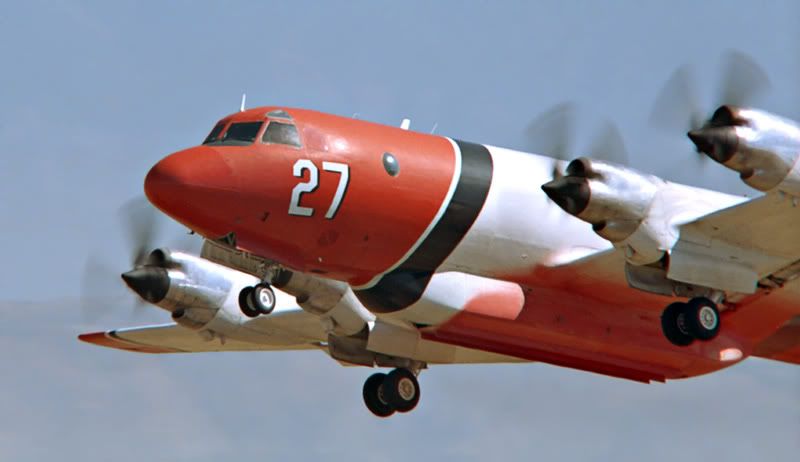
.
.....DIVERTER VANES...thanks Larry...now I know the story of why those are on there....
...Tanker 27...N927AU...at Hemet 5 Aug 1995...

.
Looking at the size of the vanes & actators
Thu May 08, 2008 10:40 am
Originally,the tank operation was via a dedicated pneumatic system
I assume tis has been changed to hydraulic right ?
Looking at the size of the vanes & their actuators.......
Do you use and extenal isolated pump for the system or is this connected on the AC main hydraulic system ?
Tks for the pics.
A few pictures from Butler Aircraft
Thu May 08, 2008 5:30 pm
Michel,
The diverter vanes are fixed and simply act as a means of preventing the retardant flow that is leaving a partially opened door from streaming sideways rather than dropping straight down below the aircraft.We removed the vanes from our DC-7's when we disabled the Low Flow circuit from the selector switch on the Drop Arming Panel.The diverter vanes cause numerous problems in cleaning retardant from the bottom of the tank as well as being very much in the way if the tank doors require adjustment or other maintenance.
The tank hydraulic system has been adapted into the aircraft system and is only isolated by check valves when the tank system is armed.With the tank arming in the Off position,the tank is completely isolated.I liked the air operation because it left the aircraft hydraulic system in it's original configuration.As was discussed earlier,the type of hydraulic fluid used in the aircraft system depends on which airline originally ordered the airplane.So,Tanker 60,as an ex-Eastern Airlines DC-7B uses 5606 hydraulic fluid to operate the tank via the aircraft hydraulic system and Tankers 62 and 66,as ex-United DC-7's use Skydrol.
The diverter vanes are fixed and simply act as a means of preventing the retardant flow that is leaving a partially opened door from streaming sideways rather than dropping straight down below the aircraft.We removed the vanes from our DC-7's when we disabled the Low Flow circuit from the selector switch on the Drop Arming Panel.The diverter vanes cause numerous problems in cleaning retardant from the bottom of the tank as well as being very much in the way if the tank doors require adjustment or other maintenance.
The tank hydraulic system has been adapted into the aircraft system and is only isolated by check valves when the tank system is armed.With the tank arming in the Off position,the tank is completely isolated.I liked the air operation because it left the aircraft hydraulic system in it's original configuration.As was discussed earlier,the type of hydraulic fluid used in the aircraft system depends on which airline originally ordered the airplane.So,Tanker 60,as an ex-Eastern Airlines DC-7B uses 5606 hydraulic fluid to operate the tank via the aircraft hydraulic system and Tankers 62 and 66,as ex-United DC-7's use Skydrol.
Fri May 09, 2008 2:36 am
Thanks so much for taking the time and effort to show everyone around your office! Proof once again that in the old days you really had to know how to fly and exactly where to reach to activate whatever-today all you need to be able to do is type 90 WPM on the FMC
You guys seem to take great pride in your equipment as it looks like they all sparkle, nice to see!
You guys seem to take great pride in your equipment as it looks like they all sparkle, nice to see!
tanker 14
Mon May 12, 2008 8:52 pm
...Larry....I discovered I had a pic of "your" airplane...
...N401US (tanker 62)....was tanker 14....at Ontario, Sept 1975...
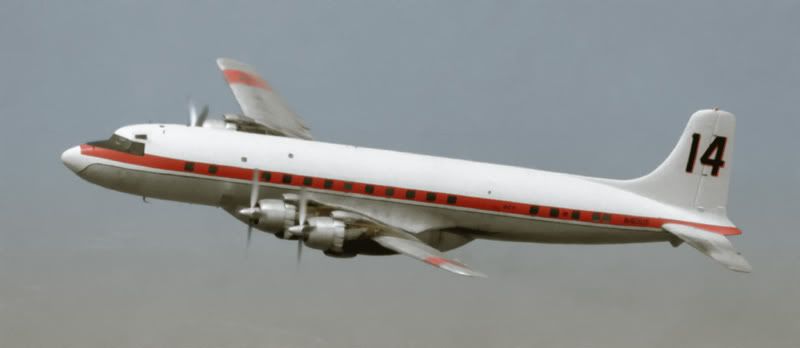
.
...N401US (tanker 62)....was tanker 14....at Ontario, Sept 1975...

.
A few pictures from Butler Aircraft
Mon May 12, 2008 9:17 pm
Sledge,Thanks for the picture of Tanker 62 as Tanker 14.I really appreciate that.Somewhere I have a picture of N401US at Redmond as Tanker 97,before they settled on 62.
Also,Thanks for the comments from the Inspector.Our maintenance guys take a lot of pride in their work and we flight crews really love these old birds.I always figure that being proficient in operating large radial engines is a lot like being proficient as an engineer or fireman on a steam locomotive.It's an impressive skill,but also a dying art.Also,you end up pretty oily and grubby by the end of the day on either machine.
I'm currently in Anchorage on a three day session in Northern Air Cargo's C-118/DC-6 Simulator.I brought my camera this time and will try to get some good shots of this one of a kind treasure.I should be home by May 14th.
Also,Thanks for the comments from the Inspector.Our maintenance guys take a lot of pride in their work and we flight crews really love these old birds.I always figure that being proficient in operating large radial engines is a lot like being proficient as an engineer or fireman on a steam locomotive.It's an impressive skill,but also a dying art.Also,you end up pretty oily and grubby by the end of the day on either machine.
I'm currently in Anchorage on a three day session in Northern Air Cargo's C-118/DC-6 Simulator.I brought my camera this time and will try to get some good shots of this one of a kind treasure.I should be home by May 14th.
Tue May 13, 2008 2:58 am
Larry,
I have always had the greatest admiration for engineers of steam powered locomotives and pilots of multi engined piston aircraft. Each vehicle differs from their modern decendants in that each has a distinct personality and either needs to be kicked or coddled into performing, and neither is above blowing your fire out the stack. Modern stuff is more 'push that button and it will whine all by itself'
I have always had the greatest admiration for engineers of steam powered locomotives and pilots of multi engined piston aircraft. Each vehicle differs from their modern decendants in that each has a distinct personality and either needs to be kicked or coddled into performing, and neither is above blowing your fire out the stack. Modern stuff is more 'push that button and it will whine all by itself'
A few pictures from Butler Aircraft
Sun May 25, 2008 12:52 am
I finally have a chance to post some pictures from Northern Air Cargo's C-118/DC-6 simulator.It's a very interesting experience "flying" that machine.I know,for instance,that it is solidly mounted to the floor,but after 5 minutes of flying the departure from Bethel and intercepting the DME arc for the ILS approach to Runway 18,you'll never convince me that the simulator doesn't move.The inner ear plays tricks,I guess.
The simulation is really quite good.There's a very slight lag in response to control inputs,but that's apparently due to the age of the operating system,which consists of hundreds,if not thousands of vacuum tubes and IBM punch cards,as well as many miles of wiring.There's an entire wall covered with 6 foot deep that are full of these items.I don't know what the power requirements are,but they must be massive.The vacuum tubes also create a vast amount of heat.
We find that the simulator is very useful in allowing us to actually perform the procedures involved in almost every concievable emergency.The fire warnings are accurate and you have to use the correct procedures to correct the problems,most of which are too dangerous to do anything more than read the checklists and pretend to pull fire bottle handles,or whatever.
Here is the simulator in Anchorage
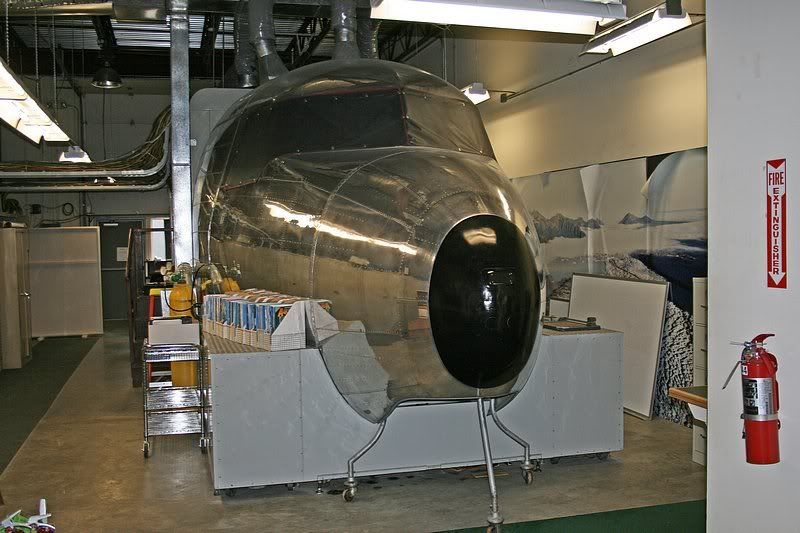
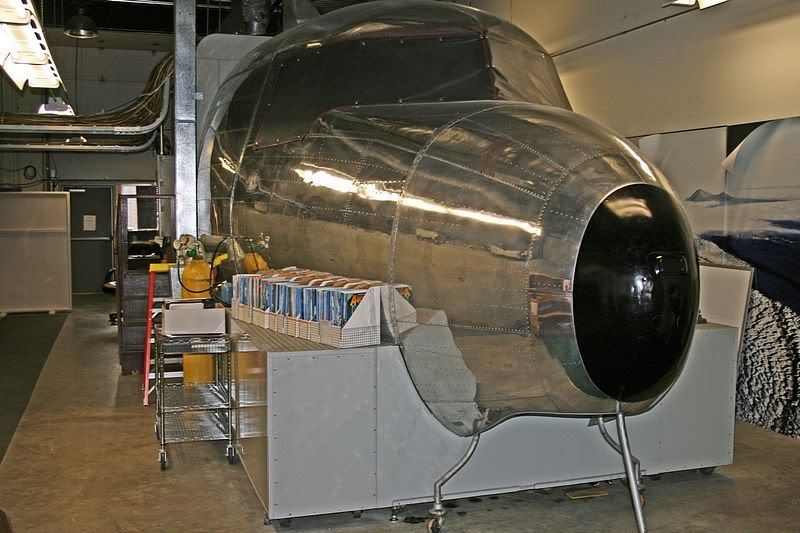
This is a view of the right side of the sim just aft of the cockpit and the alternate entrance stairs
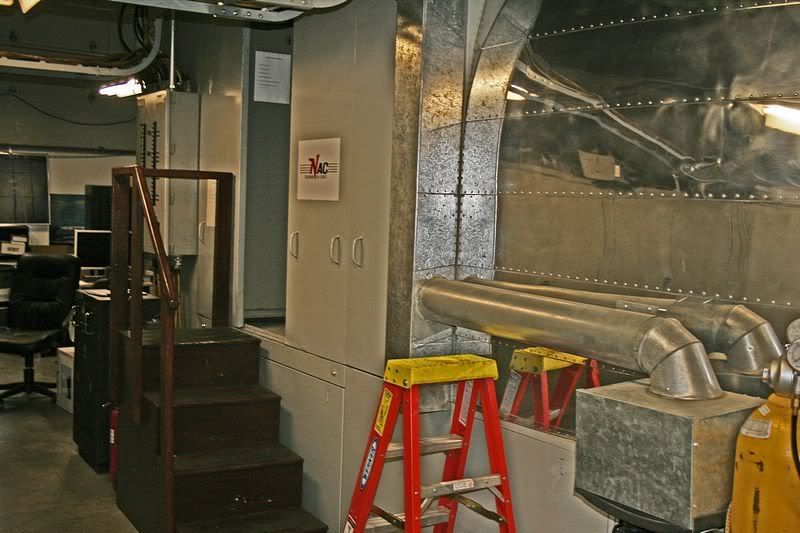
This is the back of the simulator showing the stairs from the previous picture to the right
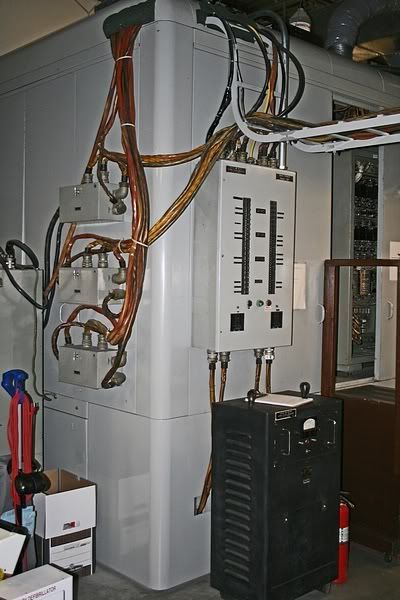
This bank of electrical boxes is to the left as you enter the room where the simulator is located.Each is full of vacuum tubes,relays,punchcards and wiring.The second picture is the electrical box at the rear corner of these cabinets.
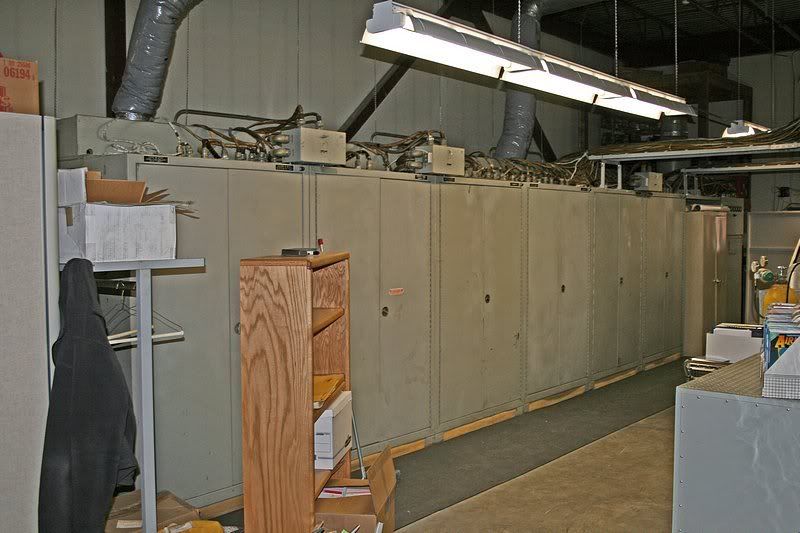
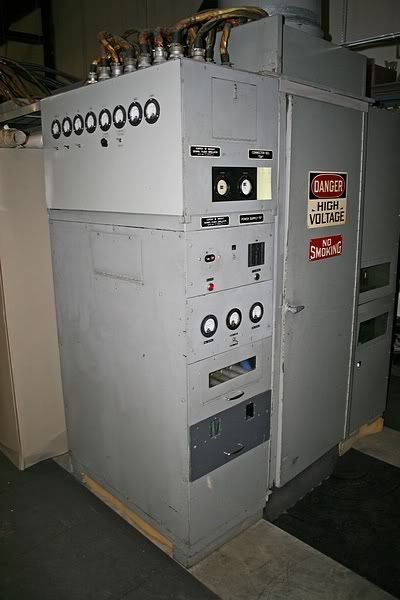
Normally,the simulator is entered through a door on what would be the left side of the airplane.That's where the data plate is located.On the second day of training,one small panel behind the door was open to expose some of the "guts" of the system.


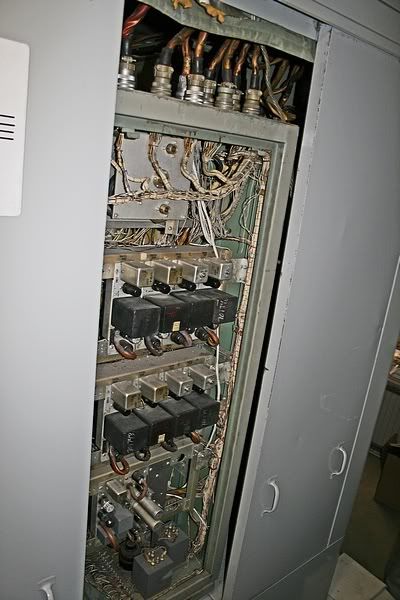
Here are some cockpit pictures.All systems,including pressurization and the heater/air conditioning sysytems and related malfunctions can be accurately simulated.We didn't work with these systems,though,as all componenents have been removed from our tankers.

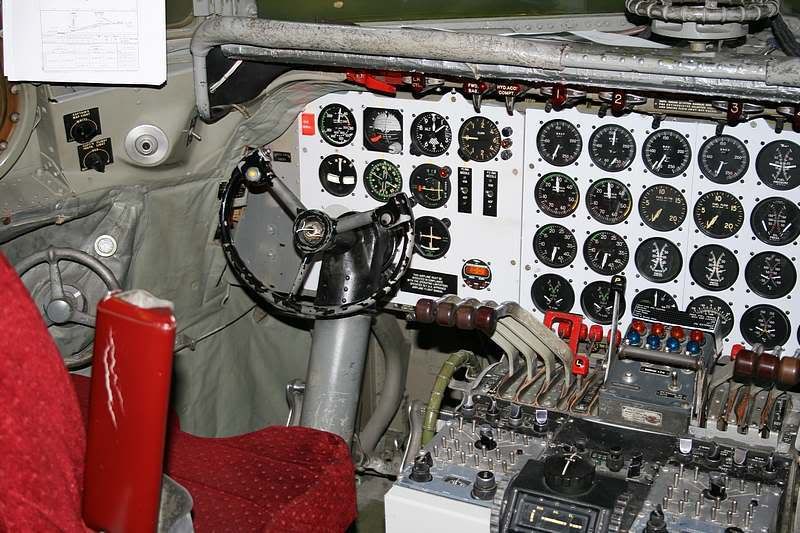
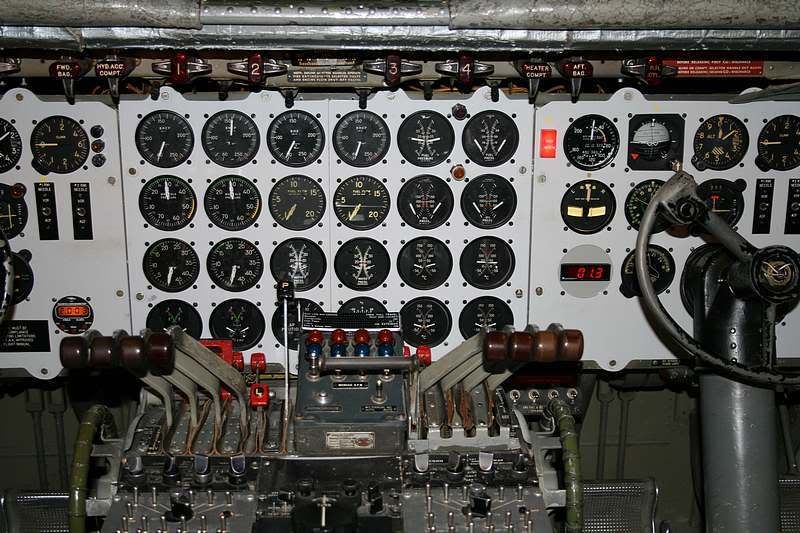

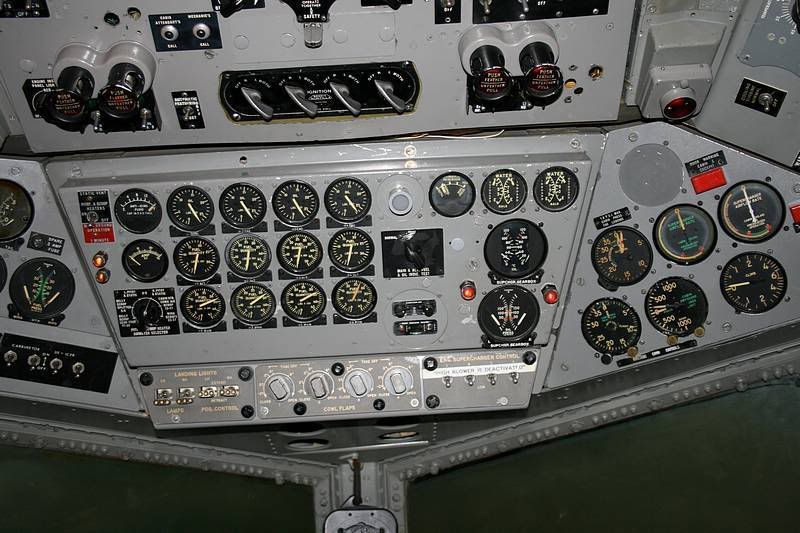
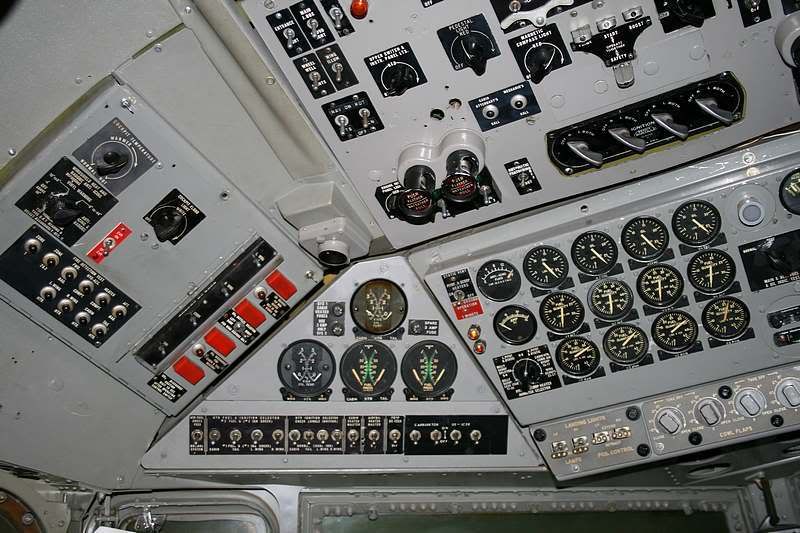
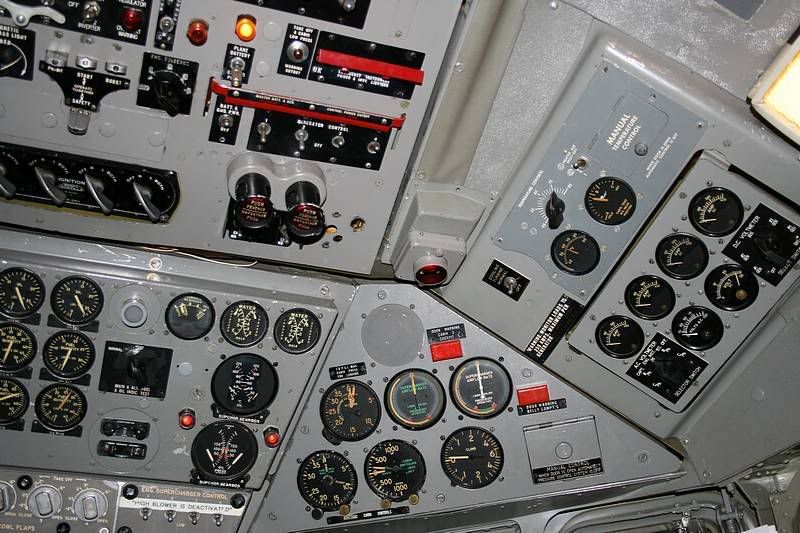

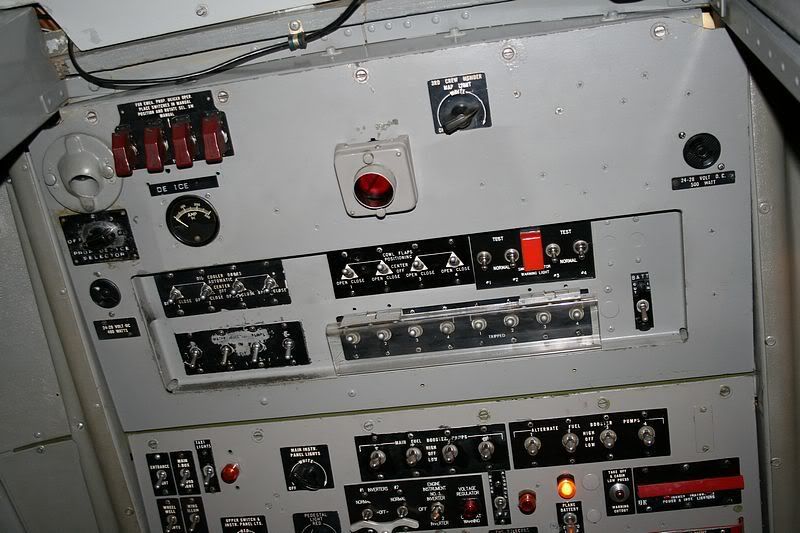
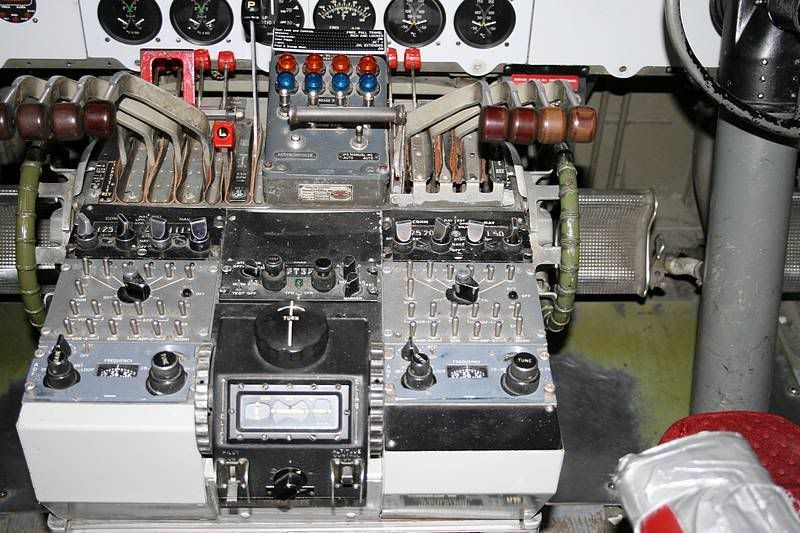
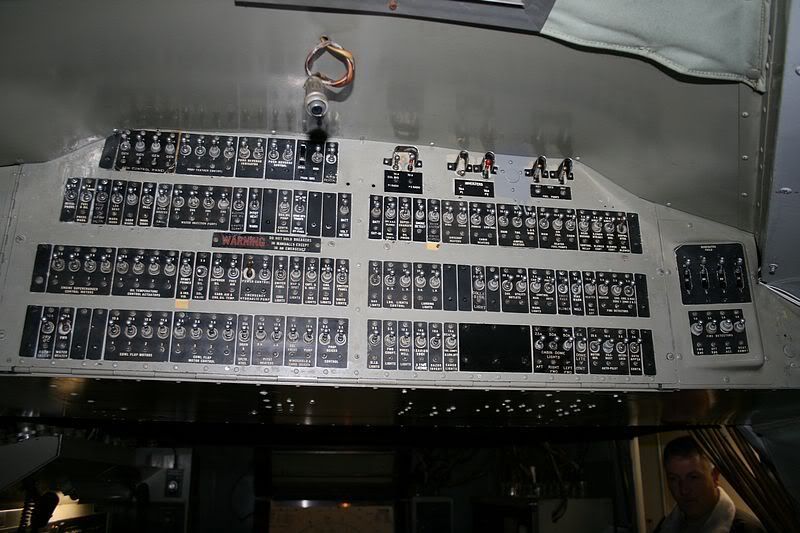
These pictures are of the controls in the instrucor's section of the simulator.In the back,are the controls for the radios and a navigational tracking record that is similar to a Link Trainer.The large box with all of the switches and lights controls malfunctions to engines and systems.
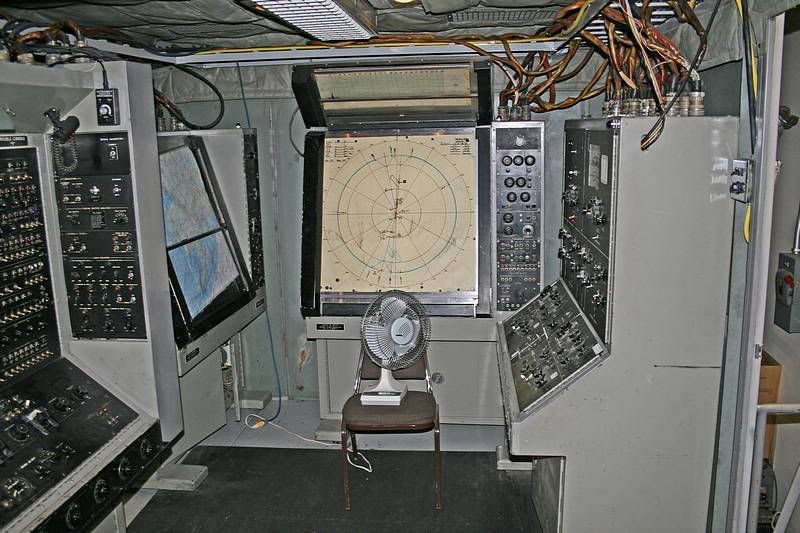
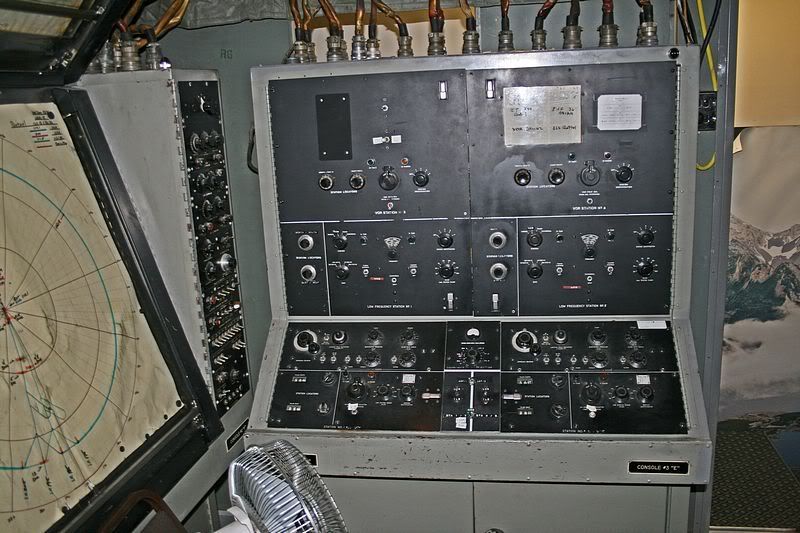
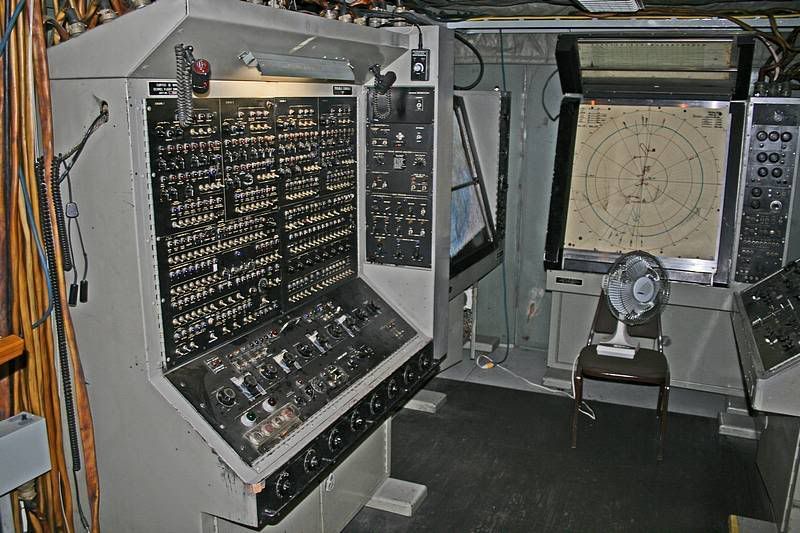
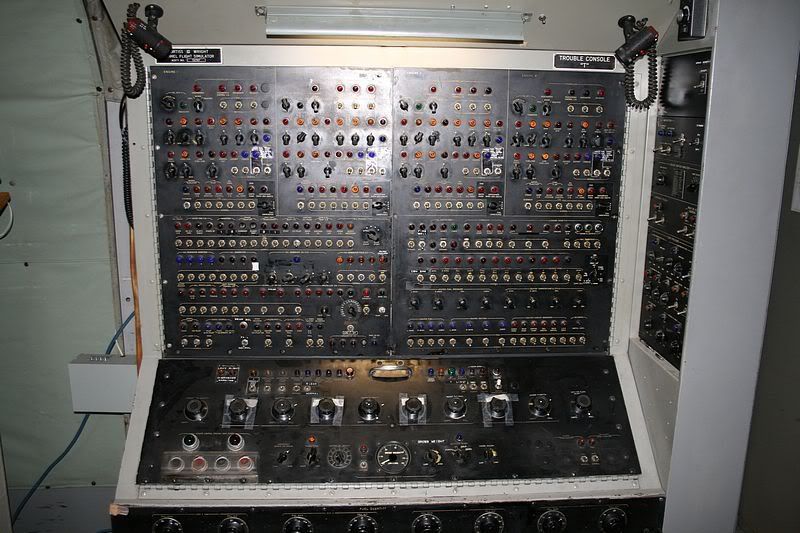
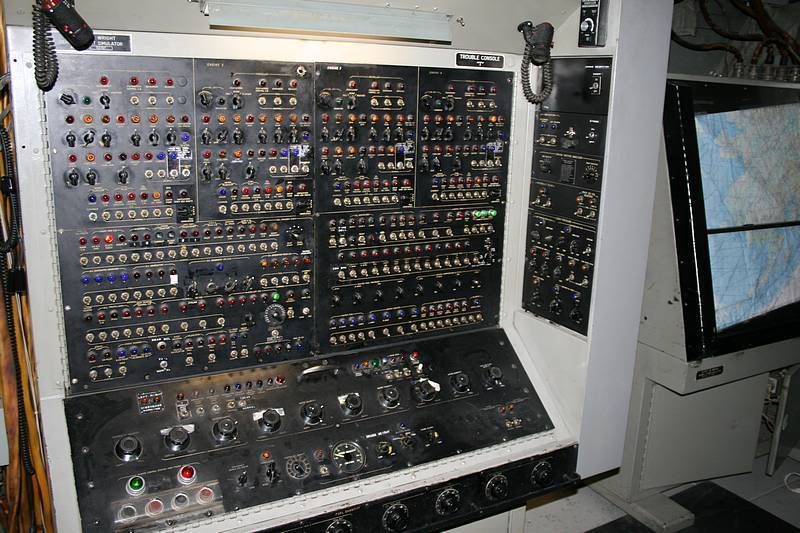
I have more detailed pictures of some of the instructor's control panels and some other views of the interior,but these pictures should give an idea of what this jewel of a machine looks like.I didn't get a copy of the approach plate for the ILS Runway 18 procedure for Bethel,Alaska,but this is cropped from one of the cockpit pictures.
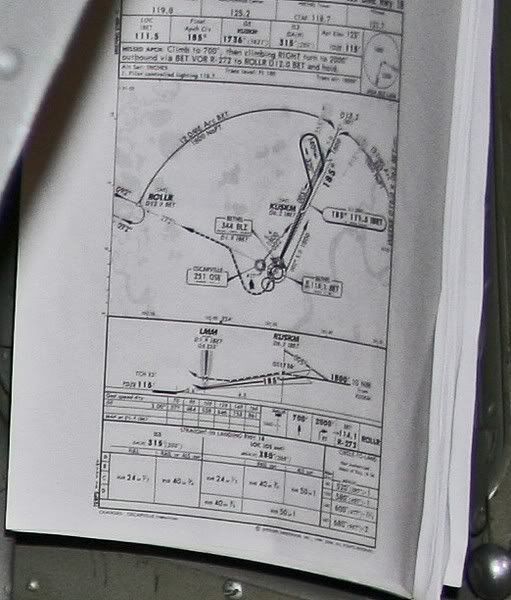
The simulation is really quite good.There's a very slight lag in response to control inputs,but that's apparently due to the age of the operating system,which consists of hundreds,if not thousands of vacuum tubes and IBM punch cards,as well as many miles of wiring.There's an entire wall covered with 6 foot deep that are full of these items.I don't know what the power requirements are,but they must be massive.The vacuum tubes also create a vast amount of heat.
We find that the simulator is very useful in allowing us to actually perform the procedures involved in almost every concievable emergency.The fire warnings are accurate and you have to use the correct procedures to correct the problems,most of which are too dangerous to do anything more than read the checklists and pretend to pull fire bottle handles,or whatever.
Here is the simulator in Anchorage


This is a view of the right side of the sim just aft of the cockpit and the alternate entrance stairs

This is the back of the simulator showing the stairs from the previous picture to the right

This bank of electrical boxes is to the left as you enter the room where the simulator is located.Each is full of vacuum tubes,relays,punchcards and wiring.The second picture is the electrical box at the rear corner of these cabinets.


Normally,the simulator is entered through a door on what would be the left side of the airplane.That's where the data plate is located.On the second day of training,one small panel behind the door was open to expose some of the "guts" of the system.



Here are some cockpit pictures.All systems,including pressurization and the heater/air conditioning sysytems and related malfunctions can be accurately simulated.We didn't work with these systems,though,as all componenents have been removed from our tankers.











These pictures are of the controls in the instrucor's section of the simulator.In the back,are the controls for the radios and a navigational tracking record that is similar to a Link Trainer.The large box with all of the switches and lights controls malfunctions to engines and systems.





I have more detailed pictures of some of the instructor's control panels and some other views of the interior,but these pictures should give an idea of what this jewel of a machine looks like.I didn't get a copy of the approach plate for the ILS Runway 18 procedure for Bethel,Alaska,but this is cropped from one of the cockpit pictures.

Sun May 25, 2008 9:32 am
But how do you honk the horn? The buttons are missing!
That is a fantastic piece of equipment. Hopefully there is a museum of flight simulators it can go to some day. I wonder how much maintenance is required?
That is a fantastic piece of equipment. Hopefully there is a museum of flight simulators it can go to some day. I wonder how much maintenance is required?
Mon May 26, 2008 6:51 am
In 1963 I went to a 2 week course at NAS Glenview in a C118 simulator.I thought I knew it all till I started the course. One of the best learning experiences in my career.Went on to fly the jumpseat for 13 more years,better prepared than before the simulator.Thanx for the pics. 
Mon May 26, 2008 9:30 am
Beautiful simulator photos, Larry.
When I saw the data plate I dug out my photos of "little brother". This sim is located in the main CAF hangar at Midland, but I don't know if the instructor's equipment is still around or has been lost.
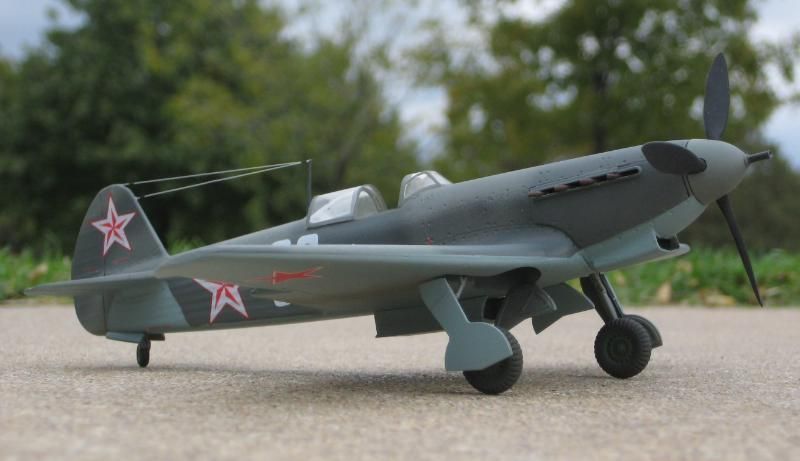
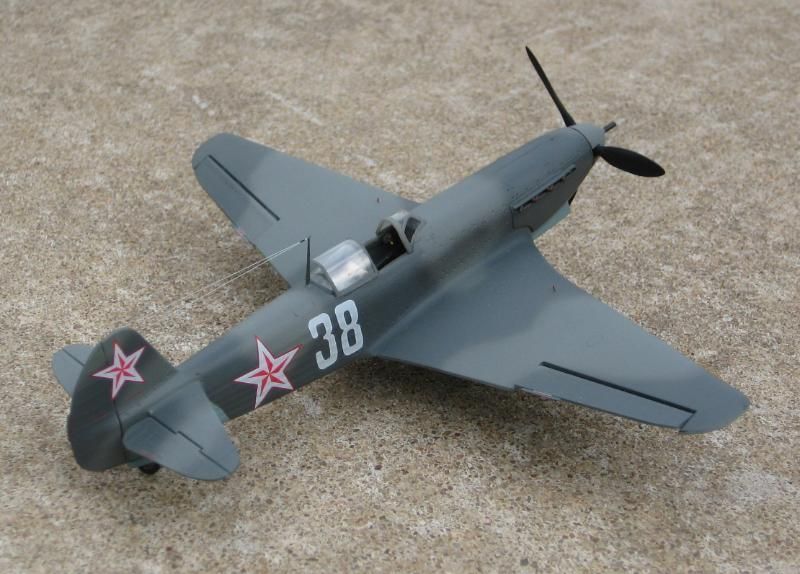


Scott
When I saw the data plate I dug out my photos of "little brother". This sim is located in the main CAF hangar at Midland, but I don't know if the instructor's equipment is still around or has been lost.




Scott
A few pictures from Butler Aircraft
Sat May 31, 2008 7:00 pm
I finally got to fly this week.Yesterday,my co-pilot Ron Carpinella and I took Tanker 60 for a maintenance test flight.The first flight of the season following winter maintanence can get pretty exciting,but this was was routine.
This shows the engine instruments at empty cruise power of 140 BMEP and 1900 RPM.
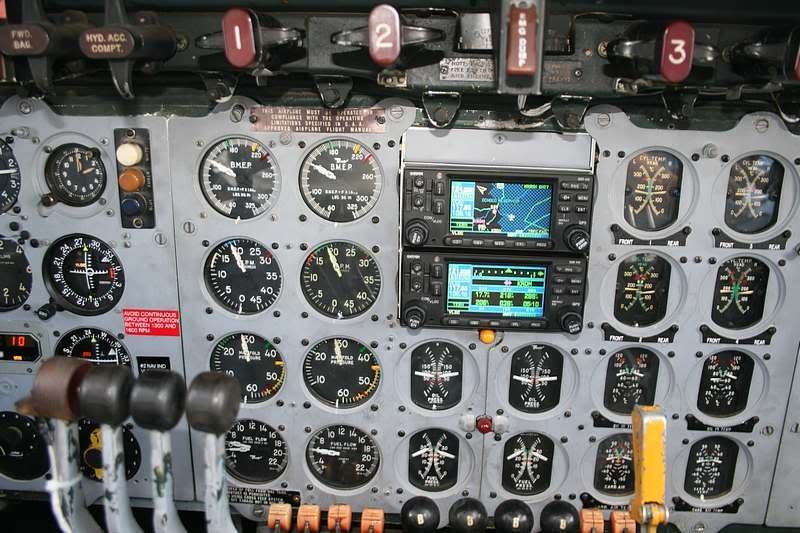
Trying to take pictures of the analyzer is difficult because if you slow the shutter speed down enough to include both the top and bottom halves of the pattern the picture will probably blur because you're bouncing around.This picture shows half of the pattern for a shorted secondary in the rear plug of #9 cylinder of #1 engine.In real life there's a mirror pattern below the reference line of the scope.
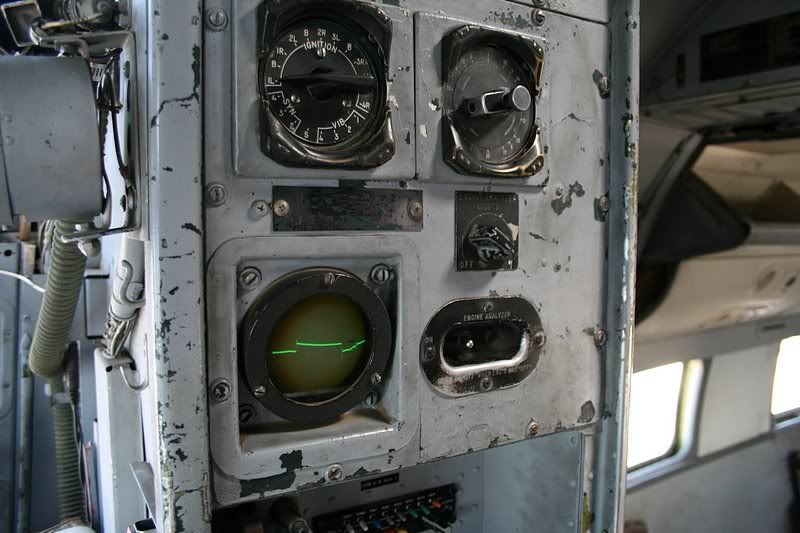

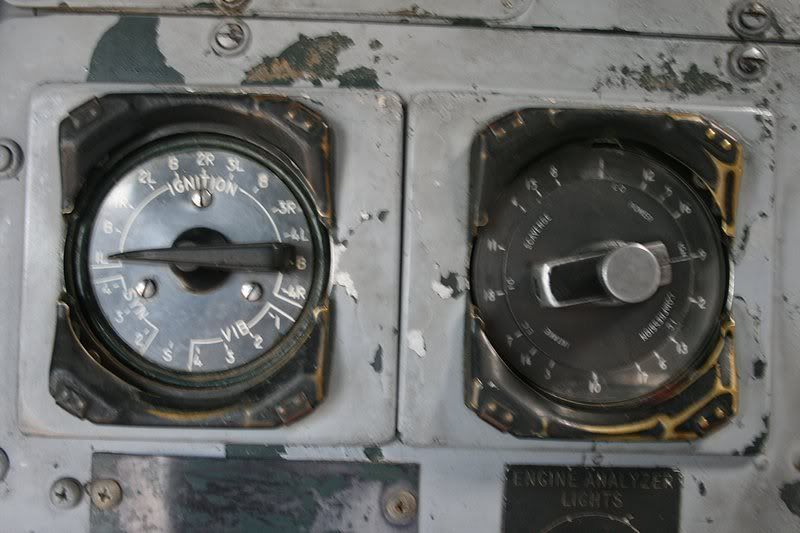
These pictures show Dick Adair and Barry Sandberg working off squwaks on #2 and #1 engines of Tanker 60 following the test flight.

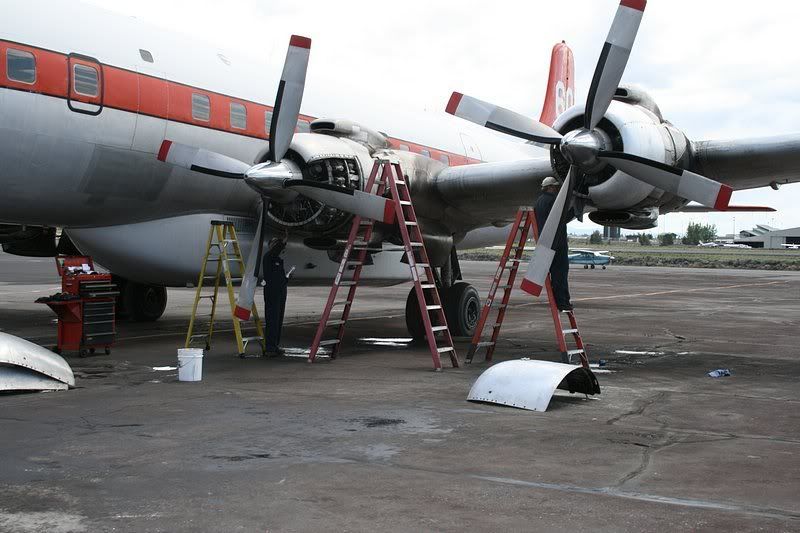
Today,I took my IFR Recurrency check ride with Dave Kelly and Ron Carpinella in Tanker 66.The following pictures are from the next flight where Dave Kelly was in the left seat and Ron flew as c/p.
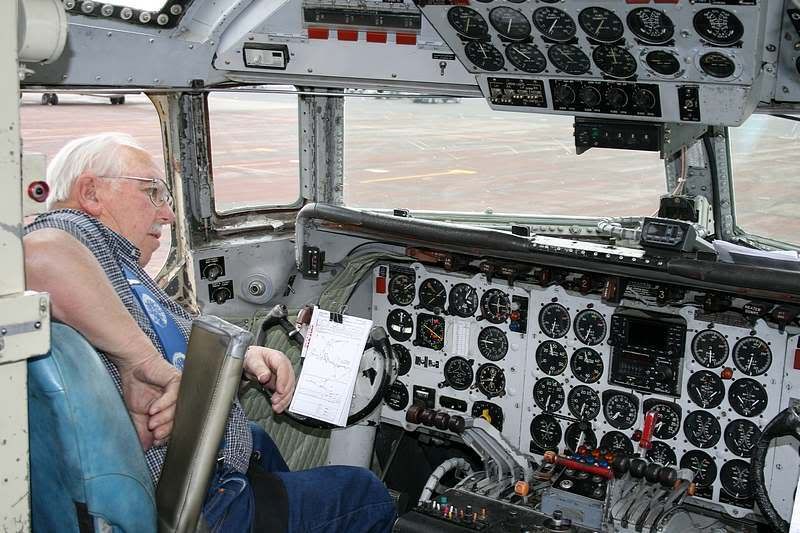
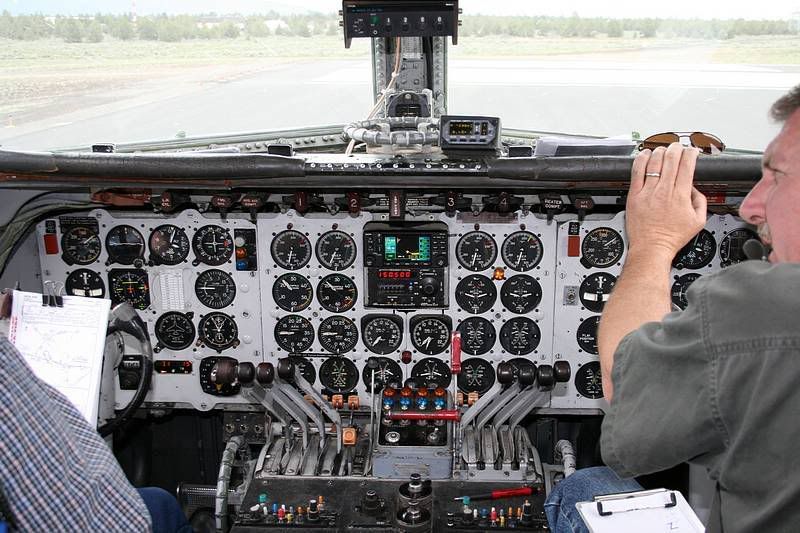
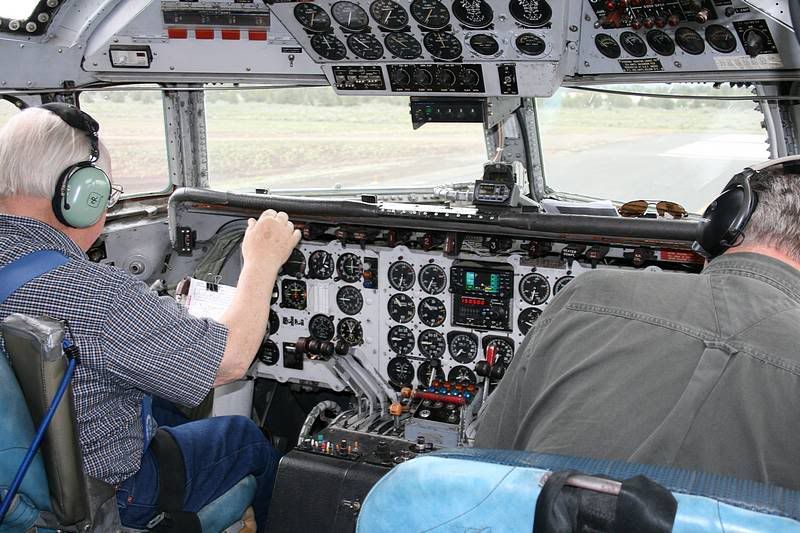
This is during the take-off roll with Ron setting up 50" of manifold pressure.

This is the first power reduction to METO Power which is approximately 43.5" and 2600 RPM.
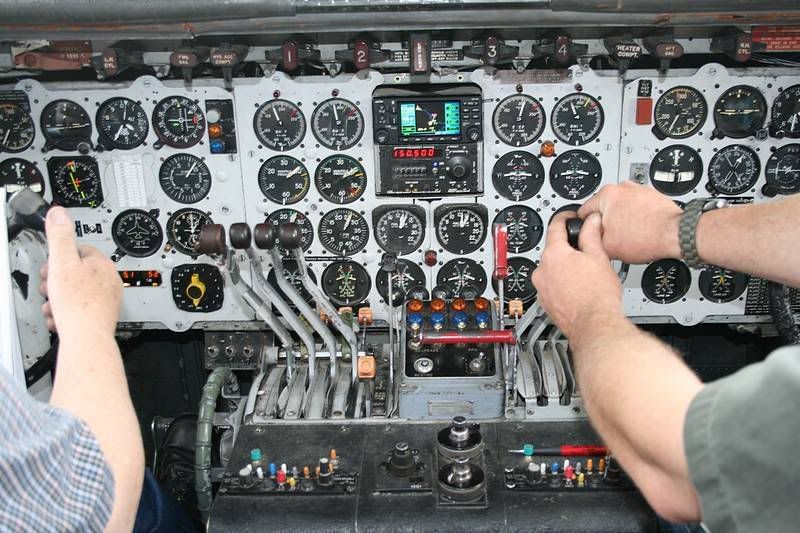
In this picture,Dave is doing a little airwork using 120 BMEP and 2000 RPM.
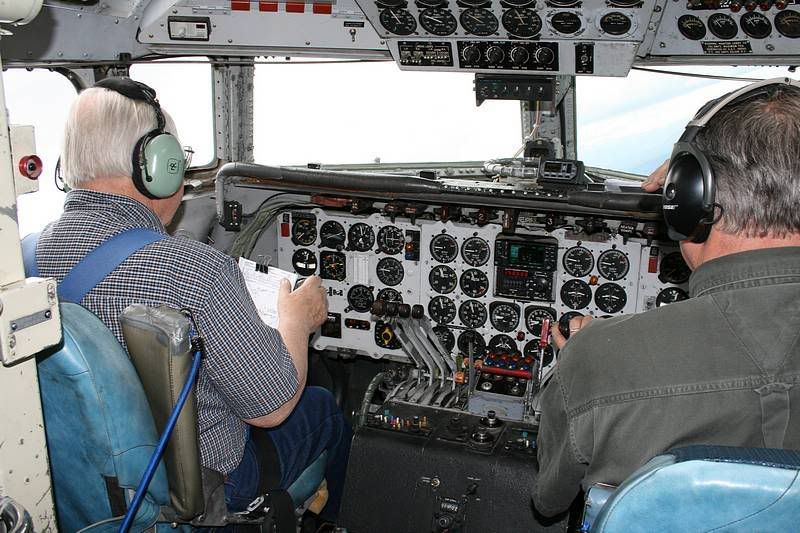
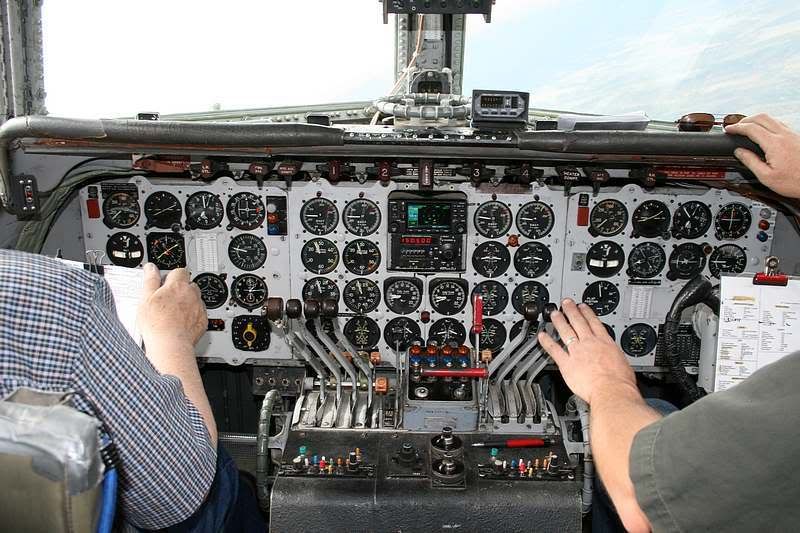
This shows the engine instruments at empty cruise power of 140 BMEP and 1900 RPM.

Trying to take pictures of the analyzer is difficult because if you slow the shutter speed down enough to include both the top and bottom halves of the pattern the picture will probably blur because you're bouncing around.This picture shows half of the pattern for a shorted secondary in the rear plug of #9 cylinder of #1 engine.In real life there's a mirror pattern below the reference line of the scope.



These pictures show Dick Adair and Barry Sandberg working off squwaks on #2 and #1 engines of Tanker 60 following the test flight.


Today,I took my IFR Recurrency check ride with Dave Kelly and Ron Carpinella in Tanker 66.The following pictures are from the next flight where Dave Kelly was in the left seat and Ron flew as c/p.



This is during the take-off roll with Ron setting up 50" of manifold pressure.

This is the first power reduction to METO Power which is approximately 43.5" and 2600 RPM.

In this picture,Dave is doing a little airwork using 120 BMEP and 2000 RPM.


???
Sat May 31, 2008 8:05 pm
have always had the greatest admiration for engineers of steam powered locomotives
My great Uncle Charlie was a engineer for the 'Northern Pacific Railroad' on 4-8-4s (among others) from around 1900-1947 or so
Larry I recognise Dave Kelly. He came out to Salem and did the type checks for Jeff, Wayne and Sam in the B-25!
A few pictures from Butler Aircraft
Sat May 31, 2008 11:44 pm
You are absolutely correct,Jack.Dave Kelly has check authority in a number of older aircraft.He's also an all around great guy.I've known him since I was about 15 years old (I turned 60 in April) and he's always treated me as an equal,which does wonders for one's confidence and self esteem.I flew the 1983 fire season as his co-pilot in Tanker 62 before he typed me in the airplane and I took it over in 1984.He's one of the most talented and knowledgable people that I've ever run across.He'll be heading back to Anchorage next week to run one final Butler crew through Northern Air Cargo's C-118/DC-6 simulator.
Sun Jun 01, 2008 5:37 am
Hey Larry, do they already have you guys tasked to Florida or are they putting you guys on standby for left coast work? I heard that the early start to the Florida fire season had operators in a "hurry up" program to get tankers back up and flying so I was wondering if you guys were included in that.